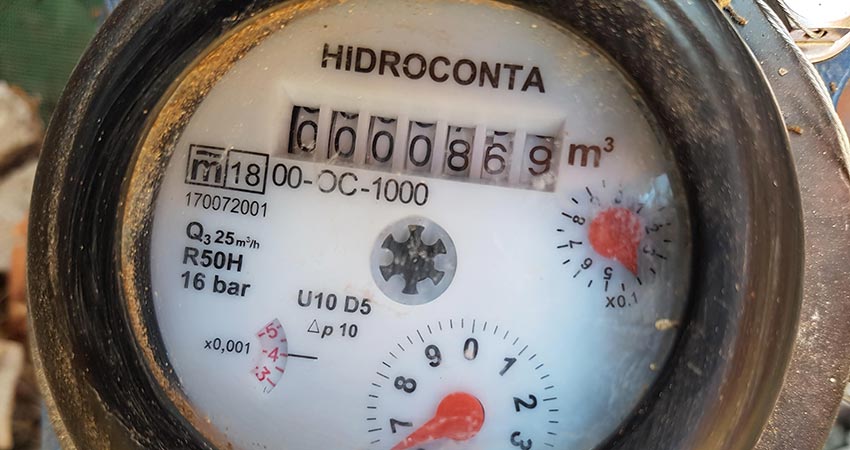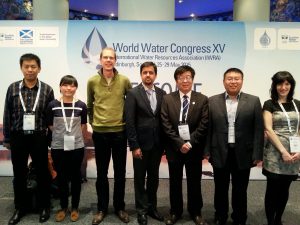Companies step up to assess water footprint of their supply chain

-
 Fergal MacErlean
Fergal MacErlean
Share article:
Larger companies in Europe are increasingly assessing the water footprint of their supply chain. Companies have traditionally focused on water use in their operations and ignored the water use in their supply chain. By extending the assessment they will address all water risks associated with their business.
These companies are following two EU Directives for EU limited liability companies, and those from outside the bloc, with turnover generated in the EU of more than € 40 million.
Companies with activities in Europe are required to disclose information on their water use and their water resources since January 2023.
Europe is a frontrunner
Rick Hogeboom, executive director of the Water Footprint Network, said that in general they are seeing an uptake in interest “especially in relation to the Corporate Sustainability Due Diligence Directive and the Corporate Sustainability Reporting Directive.” Hogeboom added that the EU is definitely a frontrunner in relation to the concept of the water footprint ‘though we would like to see it doing more’.
Mitigate negative impact
The Corporate Sustainability Due Diligence Directive (CSDDD) sets obligations for companies to mitigate their negative impact on human rights and the environment, including excessive water consumption or damage to ecosystems. In December 2023, the Council of the EU and the European Parliament reached a compromise on the CSDDD, paving the way for its formal adoption by both institutions and its entry into force before year end.
Impact CSRD
In November 2022 the EU commission adopted the Corporate Sustainability Reporting Directive (CSRD) in line with the commitment made under the European Green Deal. Almost 50,000 companies are expected to be impacted by CSRD, making up some three quarters of business in the European Economic Area. The CSRD classifies a large company as one that meets two out of three of the following criteria: more than 250 employees, a turnover of over € 40 million and more than € 20 million total assets.
Footprint measured
The footprint can be measured in cubic metres per tonne of production, per hectare of cropland, per unit of currency and in other functional units. It is divided into three categories. The green one is precipitation water that is stored in the soil’s root zone. The blue water footprint assesses surface water or groundwater that has been sourced from resources and which is either evaporated, incorporated into a product or taken from one body of water and returned to another, or returned at a different time. Irrigated agriculture, industry and domestic water use can each have a blue water footprint. The grey water footprint is the amount of fresh water required to assimilate pollutants to meet specific water quality standards.
Promoting efficient water use
In June 2023, European Commissioner for Environment, Oceans and Fisheries, Virginijus Sinkevičius called for ‘the wider use of water footprints to promote efficiency’. Speaking during Water Innovation Europe, the commissioner castigated companies for their excessive consumption of water. “We use too much water. We have to face that and tackle the causes, and change the current paradigm. Our world is changing, and we need different attitudes to water consumption. Tackling those causes means addressing prices that are simply too low. It means removing subsidies that fuel the excessive consumption of water. It means the wider use of water footprints to promote efficiency, and identify unsustainable use.”
Water Footprint Network
In 2008, Hoekstra, together with leading global players from business, civil society, multilateral organisations and academia, founded the Water Footprint Network, headquartered at the University of Twente, in The Netherlands.
The Water Footprint Network, a non-profit, multi-stakeholder global entity, says that in addition to being beneficial for a company’s image and social corporate responsibility ethos, the use of water footprint accounting to reduce a corporate water footprint is to anticipate further regulatory control by governments. The network is a knowledge centre and puts interested companies in touch with their partners for further assistance.
The water footprint concept was created by the late Dutch professor Arjen Hoekstra in 2002 while working at the UNESCO-IHE Institute for Water Education as a metric to measure the amount of water consumed and polluted to produce goods and services along their full supply chain. A 2011 UNESCO-IHE report on National Water Footprint Account, co-authored by Hoekstra, found that US citizens had an annual water footprint of 2,840 cubic metres, with some 20% of this being external. The largest external component lays in China’s Yangtze river basin.














